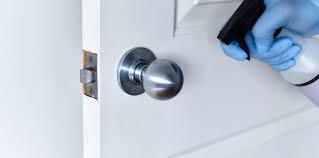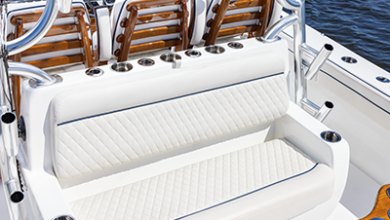Quick Fixes for Jammed Locks: Easy Solutions at Home

There’s nothing more frustrating than being locked out of your home, car, or office because of a jammed lock. Whether it’s a stubborn key that won’t turn or a door that refuses to budge, residential jammed locks can help you regain access quickly. A jammed lock can disrupt your day and leave you feeling helpless. But before you panic or call a locksmith, there are several quick fixes you can try to resolve the issue yourself.
Why Do Locks Get Jammed?
Understanding why locks jam is the first step toward fixing the problem. Locks are mechanical devices, and like any other mechanism, they can wear out, get dirty, or malfunction over time. Here are some of the most common reasons why locks get stuck:
Dirt and Debris: Dust, dirt, and grime can accumulate inside the lock mechanism, preventing the key from turning smoothly.
Rust and Corrosion: Exposure to moisture or humidity can cause metal components to rust, making the lock difficult to operate.
Misaligned Components: Over time, the internal components of a lock can shift, causing misalignment and jamming.
Worn-Out Keys or Locks: Frequent use can wear down both the key and the lock, leading to compatibility issues.
Foreign Objects: Small objects like broken keys, paper clips, or even insects can get stuck inside the lock, blocking the mechanism.
Temperature Changes: Extreme heat or cold can cause the metal to expand or contract, temporarily jamming the lock.
Now that we know why locks jam, let’s dive into some quick fixes you can try to get your lock working again.
Quick Fixes for Jammed Locks
Lubricate the Lock
One of the easiest and most effective ways to fix a jammed lock is by lubricating it. Over time, the internal components of a lock can dry out, causing friction and making it difficult to turn the key. Here’s how to do it:
Step 1: Choose the right lubricant. Graphite powder is a popular choice because it doesn’t attract dirt or gum up the mechanism. Alternatively, you can use a silicone-based lubricant or WD-40.
Step 2: Apply the lubricant directly into the keyhole. Use a small amount to avoid over-saturating the lock.
Step 3: Insert the key and gently turn it back and forth to distribute the lubricant evenly.
Step 4: Wipe away any excess lubricant with a clean cloth.
Lubrication can often resolve minor jams caused by dirt or dryness. However, avoid using oil-based lubricants, as they can attract dust and worsen the problem over time.
Check for Misalignment
If your lock is misaligned, the bolt may not be engaging properly with the strike plate on the door frame. This can make it difficult to lock or unlock the door. Here’s how to fix it:
Step 1: Inspect the strike plate (the metal plate on the door frame) for signs of misalignment.
Step 2: Loosen the screws holding the strike plate in place.
Step 3: Adjust the position of the strike plate slightly to align it with the bolt.
Step 4: Tighten the screws and test the lock.
If the misalignment is severe, you may need to file down the strike plate or reposition it entirely.
Remove Foreign Objects
If something is stuck inside the lock, it can prevent the key from turning. Here’s how to remove it:
Step 1: Use a flashlight to inspect the keyhole for visible debris.
Step 2: If the object is accessible, use a pair of tweezers or a thin wire to carefully remove it.
Step 3: For stubborn debris, try using compressed air to blow it out.
Be gentle to avoid damaging the lock mechanism. If the object is deeply lodged, it’s best to call a professional locksmith.
Fix a Stuck Key
If your key is stuck in the lock and won’t turn, don’t force it. Forcing the key can break it or damage the lock. Instead, try these steps:
Step 1: Wiggle the key gently while applying slight pressure. Sometimes, this can free the key.
Step 2: Lubricate the lock as described earlier.
Step 3: If the key still won’t budge, use a pair of pliers to grip the key and carefully pull it out.
If the key breaks inside the lock, you’ll need to extract the broken piece using a key extractor tool or seek professional help.
Address Rust and Corrosion
Rust can cause a lock to seize up, especially in humid or coastal areas. Here’s how to deal with it:
Step 1: Apply a rust dissolver or penetrating oil to the lock.
Step 2: Let the solution sit for a few minutes to break down the rust.
Step 3: Insert the key and gently turn it to work the solution into the mechanism.
Step 4: Wipe away any residue and repeat the process if necessary.
To prevent future rusting, consider applying a protective coating to the lock or replacing it with a rust-resistant model.
Adjust the Door
Sometimes, the problem isn’t with the lock itself but with the door. A sagging or warped door can put pressure on the lock, causing it to jam. Here’s how to fix it:
Step 1: Check the hinges for loose screws and tighten them if necessary.
Step 2: If the door is sagging, adjust the hinges or add shims to level it.
Step 3: Test the lock to see if the issue is resolved.
If the door is severely warped, you may need to replace it or consult a carpenter.
Replace the Lock
If none of the above solutions work, it may be time to replace the lock. Worn-out locks are more prone to jamming and can compromise your security. Here’s how to replace a lock:
Step 1: Purchase a new lock that matches your door’s specifications.
Step 2: Remove the old lock by unscrewing the mounting screws.
Step 3: Install the new lock according to the manufacturer’s instructions.
Step 4: Test the lock to ensure it works smoothly.
Replacing a lock is a relatively simple DIY project, but if you’re unsure, it’s best to hire a professional.
Preventing Future Lock Jams
While quick fixes can solve immediate problems, prevention is always better than cure. Here are some tips to keep your locks in good working condition:
Regular Maintenance: Clean and lubricate your locks every six months to prevent dirt buildup and rust.
Use High-Quality Keys: Avoid using poorly made or duplicate keys, as they can wear out the lock faster.
Protect Against Moisture: Install a weatherproof cover or use rust-resistant locks in humid areas.
Avoid Force: Never force a key or lock, as this can cause damage.
Inspect Regularly: Check your locks for signs of wear and tear, and replace them as needed.
When to Call a Professional
While many lock jams can be fixed with DIY solutions, there are times when it’s best to call a professional locksmith. Seek professional help if:
- The lock is severely damaged or broken.
- You’ve tried all the quick fixes without success.
- The lock is part of a high-security system.
- You’re dealing with a broken key stuck in the lock.
A professional locksmith has the tools and expertise to handle complex lock issues safely and efficiently.
Final Thoughts
A jammed lock can be a major inconvenience, but with the right knowledge and tools, you can often resolve the issue yourself. From lubrication and alignment adjustments to rust removal and lock replacement, there are plenty of quick fixes to try before calling a professional. Remember to take preventive measures to keep your locks in good condition and avoid future problems.
Looking to get any online work done? Visit our website Evpromarketing today! We specialize in top-quality content creation for blogs and websites, expert digital marketing, and SEO services. Let our skilled team deliver professional solutions that will elevate your online presence and drive success!





